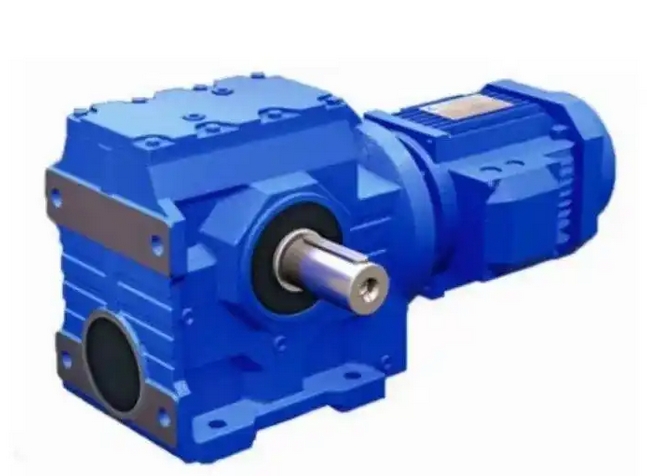How do I choose the right gear ratio for the R87F - YEJ7.5 - 4P reducer suitable for my equipment?
When choosing the appropriate reduction ratio for the R87F-YEJ7.5-4P gearbox, you need to consider multiple factors such as the operating requirements and working conditions of the equipment. The following is a detailed introduction to the selection method:
Clarify the operational requirements of the equipment
Output speed: You need to first determine the output speed required for the device to operate normally. For example, in conveyor belt equipment, if the material conveying speed is required to be 10m/min and the diameter of the conveyor belt drum is 500mm, the calculated speed of the drum is about 6.37r/min, which is the output speed that you need the reducer to achieve.

Output torque: Calculate the required output torque based on the load nature and size of the equipment. If it is a constant torque load, such as a mixer, the load torque is basically constant, and the required torque can be calculated by parameters such as the resistance and radius of the mixing blade; For variable torque loads, such as fans, the load torque varies with the speed, and the torque requirements under different operating conditions should be determined based on the performance curve of the fan.
Combining motor parameters
Motor power and speed: The R87F - YEJ7.5-4P reducer is equipped with a 7.5kW, 4-pole motor, with a synchronous speed of usually 1500r/min, and an actual speed of approximately 1440-1470r/min. You can estimate the reduction ratio based on the motor speed and the required output speed of the equipment. The calculation formula is: reduction ratio=motor speed ÷ output speed. For example, if the motor speed is 1450r/min and the required output speed of the equipment is 100r/min, the preliminary estimated reduction ratio is 1450 ÷ 100=14.5.
Consider the working conditions
Load characteristics: Different load characteristics have an impact on the selection of reduction ratio. If it is an impact load, such as a crusher, the safety factor should be appropriately increased when selecting the reduction ratio to ensure that the reducer can operate stably under impact.
Working environment: In harsh environments such as high temperature, humidity, and high dust, the efficiency of the gearbox may be affected. At this point, you need to choose the appropriate reduction ratio to ensure that the power and speed requirements of the equipment can still be met in this environment.
Refer to the performance parameters of the gearbox
Reduction ratio range: The R87 reducer has a certain reduction ratio range, and you need to ensure that the selected reduction ratio is within its available range. Generally speaking, the reduction ratio of R87 gearbox is usually between 5.36-246.54, and you need to choose the standard reduction ratio closest to the calculated value within this range.
Efficiency: Different reduction ratios correspond to different transmission efficiencies. When choosing a reduction ratio, it is important to consider the efficiency of the gearbox and try to choose a ratio with higher efficiency to reduce energy consumption.
Consult professionals or manufacturers
If you are still unsure about the choice of reduction ratio, you can consult professional technicians or manufacturers of reducers. They have rich experience and professional knowledge, and can provide more accurate and suitable reduction ratio recommendations based on your specific equipment situation and operating requirements.

